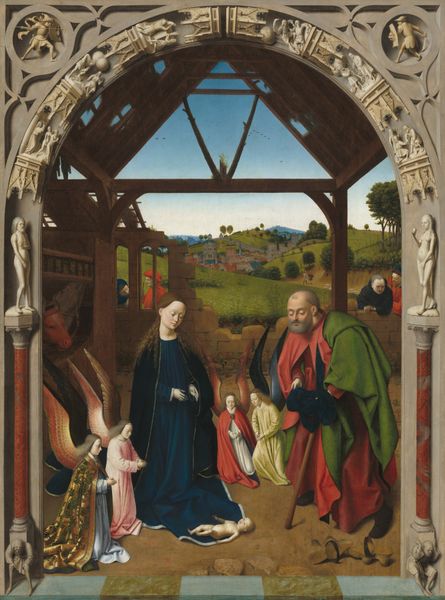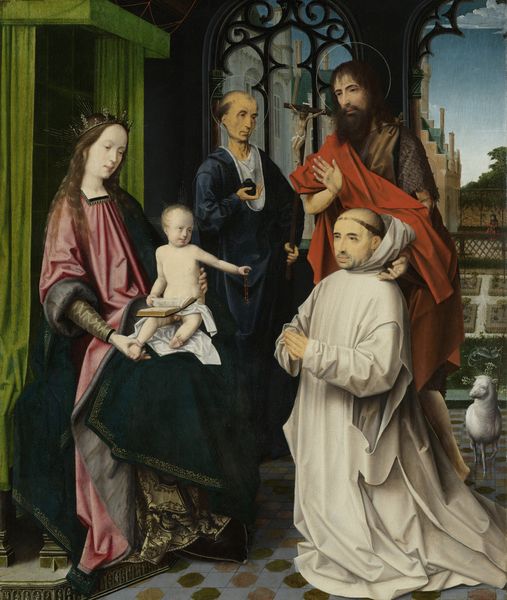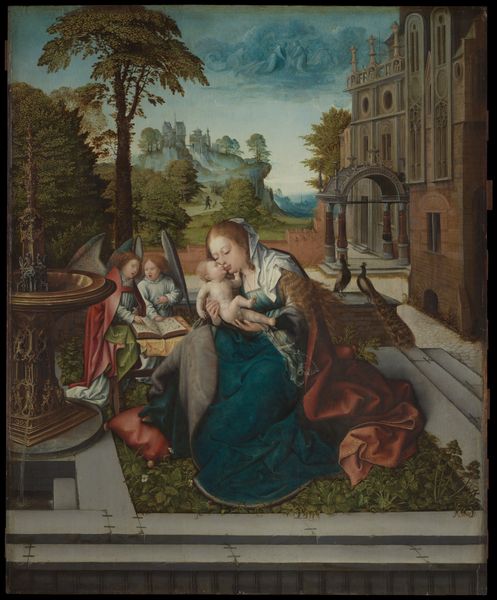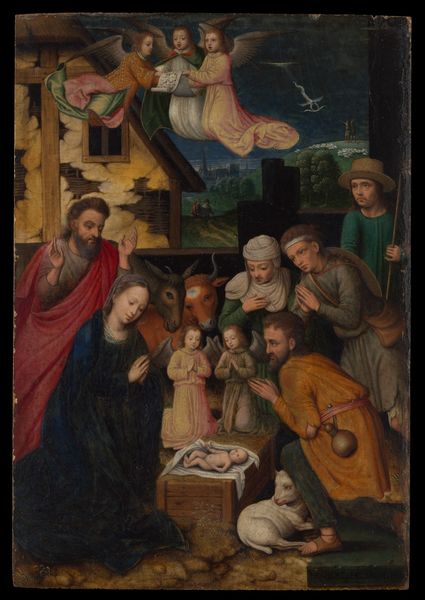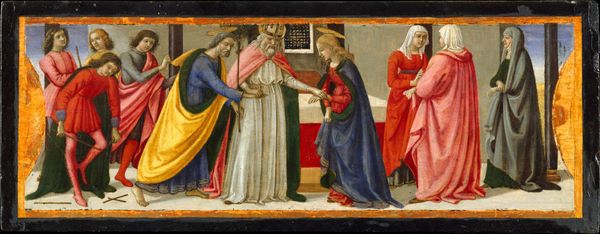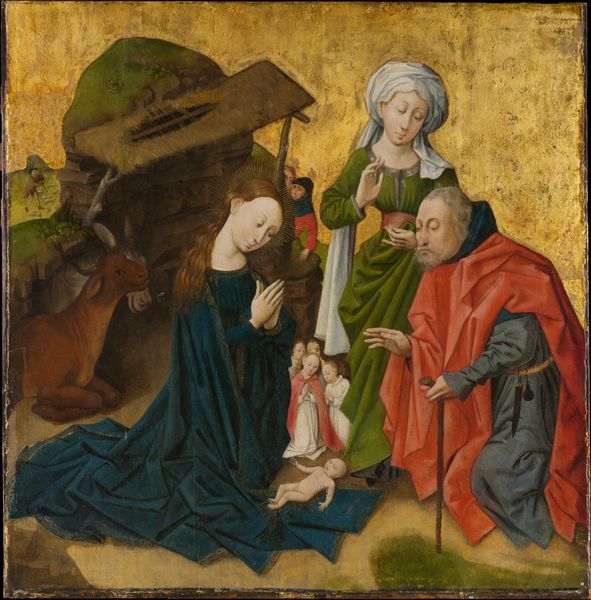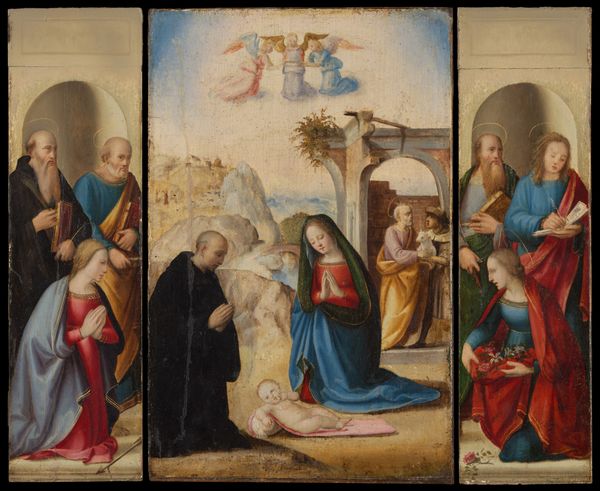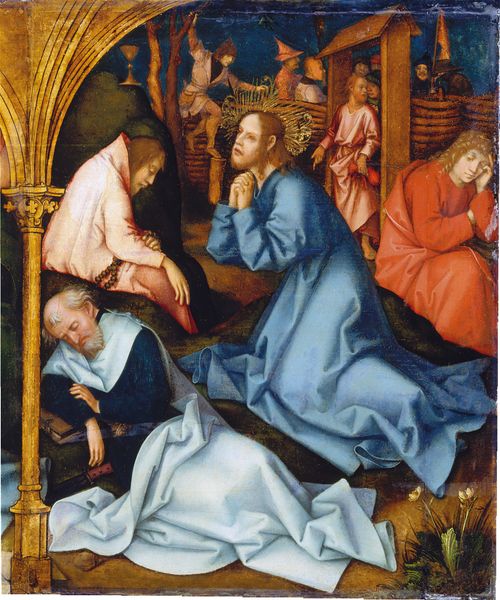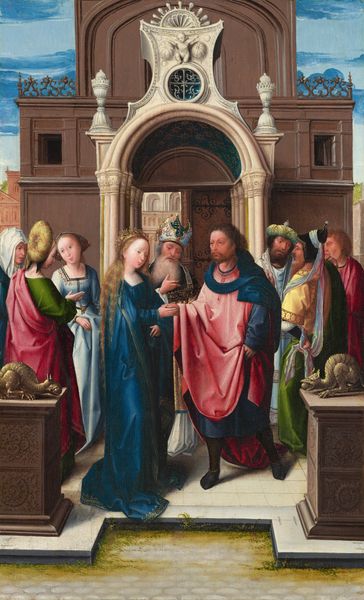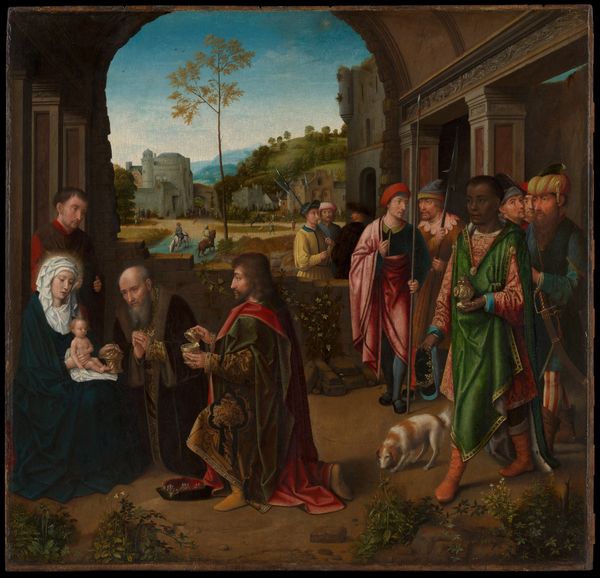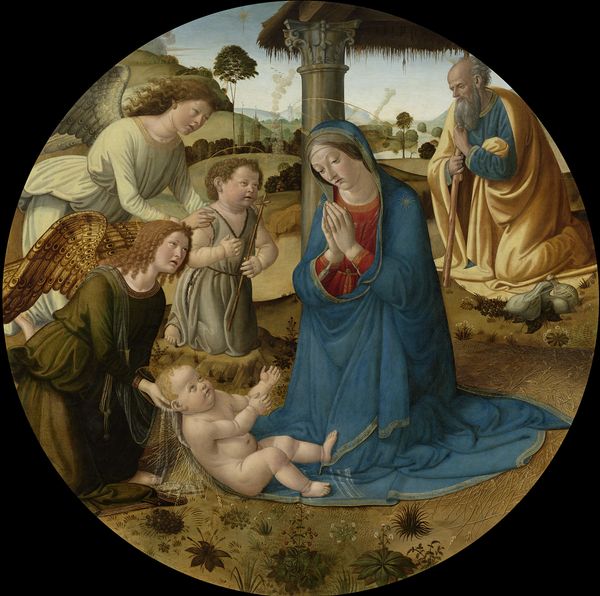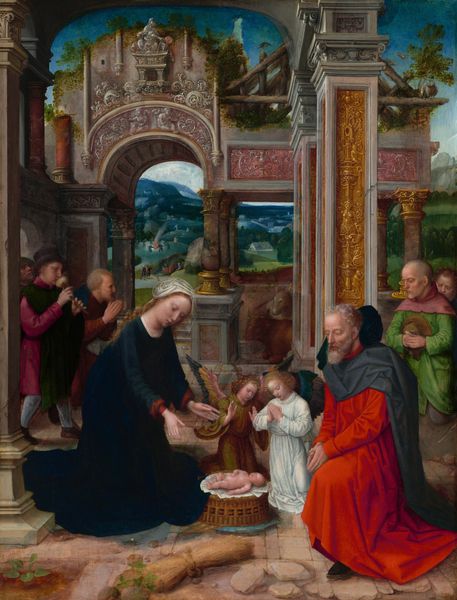
tempera, painting, oil-paint
#
allegory
#
tempera
#
painting
#
oil-paint
#
landscape
#
figuration
#
oil painting
#
chiaroscuro
#
genre-painting
#
history-painting
#
northern-renaissance
#
virgin-mary
#
watercolor
#
angel
#
christ
Dimensions: Overall 18 3/4 x 13 1/2 in. (47.6 x 34.3 cm), painted surface 18 1/2 x 13 3/8 in. (47 x 34 cm)
Copyright: Public Domain
Curator: Look at this beautiful and intimate depiction of “The Nativity,” attributed to Gerard David, dating back to around 1480 to 1483. It's a rather serene take, painted with tempera and oil on wood. Editor: My first impression? The ruinous architecture provides a strangely stark, almost melancholy setting for such a joyful occasion. It feels as though time is crumbling around the divine event. Curator: That juxtaposition is central to its power, I think. David painted this during a time of great social and religious change. Showing the birth of Christ within a decaying structure signals the transition from the old to the new covenant. The figures almost seem to glow against this backdrop of earthly decay. How do you read that compositionally? Editor: Well, thematically, I agree completely, of course. Compositionally, the figures are arranged with almost geometric precision within the arched opening of the dilapidated building. The ruin emphasizes a world worn down, eagerly awaiting the arrival of a savior to start again. I also find fascinating how "genre painting" style gets subtly invoked to depict details like the bystanders peering in—they add humanity, transforming what would have been an almost unreachable idea. Do you notice that as well? Curator: I do. I am struck by how the landscape, the town nestled in the background, becomes part of the story. David almost invites us to step out of the ruin and see this holy moment set against a backdrop of regular human activity, making the divine intervention even more striking in contrast. He turns the entire space into a narrative tool. But, you know, when I linger, I realize how Joseph, almost always sidelined, feels utterly present—he almost takes up as much emotional space as Mary herself. It's like David rebalanced that old narrative. Editor: I can see that! Yes. David presents Joseph as a central, actively participating character instead of an elder bystander. To think about the message this was trying to convey about a role—a call to action to rethink established norms. Amazing. What stays with me after this brief look? It would have to be how even ruins hold potential, echoing that out of decay something profound, maybe something holy can still emerge. Curator: I wholeheartedly agree. It leaves me wondering, too, about how this reflects the perpetual promise inherent in the act of creation and regeneration, and the simple wonder we see captured with his work.
Comments
No comments
Be the first to comment and join the conversation on the ultimate creative platform.
